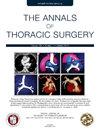超越静态规划:在 TAVR 中避免冠状动脉闭塞的计算预测模型。
IF 3.6
2区 医学
Q1 CARDIAC & CARDIOVASCULAR SYSTEMS
引用次数: 0
摘要
背景:经导管主动脉瓣置换术(TAVR)中的冠状动脉闭塞(CO)是一种破坏性并发症。我们的目的是评估一种新型计算预测建模算法对 TAVR 计划期间冠状动脉闭塞的临床影响:从 2020 年 1 月到 2022 年 12 月,根据传统标准,有 116 例(7.6%)接受 TAVR 评估的患者被认为 CO 风险增加。患者接受了前瞻性计算建模(DASI 模拟),以评估 TAVR 期间 CO 的风险;对程序修改和临床结果进行了回顾性审查:结果:在采用传统方法评估 CO 风险的 116 名患者中,53 人患有原发性主动脉瓣狭窄(45.7%),47 人既往接受过手术 AVR(40.5%),16 人既往接受过 TAVR(13.8%)。对所有患者的经导管瓣膜选择、大小和/或植入深度进行了建模。计算建模预测,39/116 例患者(31.9%)的 CO 风险增加。在该亚队列中,29 名患者接受了 TAVR。增加CO风险的程序修改包括BASILICA(10例)、烟囱冠状动脉支架(8例)、无支架冠状动脉入路(3例)。在TAVR术后,无论是预测为CO高风险的患者(进行了程序修改),还是预测为低风险的患者(标准TAVR),都没有发生冠状动脉受损的情况:结论:通过对CO进行计算预测建模,利用术前模拟患者特异性几何形状的TAVR能有效改善手术规划。本文章由计算机程序翻译,如有差异,请以英文原文为准。
Beyond Static Planning: Computational Predictive Modeling to Avoid Coronary Artery Occlusion in TAVR
Background
Coronary artery occlusion (CO) during transcatheter aortic valve replacement (TAVR) is a devastating complication. The objective of this study was to assess the clinical impact of a computational predictive modeling algorithm for CO during TAVR planning.
Methods
From January 2020 to December 2022, 116 patients (7.6%) who underwent TAVR evaluation were deemed to be at increased risk of CO on the basis of traditional criteria. Patients underwent prospective computational modeling (DASI Simulations) to assess their risk of CO during TAVR; procedural modifications and clinical results were reviewed retrospectively.
Results
Of the 116 patients at risk for CO by traditional methodology, 53 had native aortic valve stenosis (45.7%), 47 had undergone previous surgical AVR (40.5%), and 16 had undergone previous TAVR (13.8%). Transcatheter valve choice, size, or implantation depth was modeled for all patients. Computational modeling predicted an increased risk of CO in 39 of 116 (31.9%) patients. Within this subcohort, 29 patients proceeded with TAVR. Procedural modifications to augment the risk of CO included bioprosthetic or native aortic scallop intentional laceration to prevent iatrogenic coronary artery obstruction during TAVR (n = 10), chimney coronary stents (n = 8), and coronary access without stents (n = 3). There were no episodes of coronary artery compromise among patients after TAVR, either for those predicted to be at high risk of CO (with procedural modifications) or those predicted to be at low risk (standard TAVR).
Conclusions
The use of preoperative simulations for TAVR in patient-specific geometry through computational predictive modeling of CO is an effective enhancement to procedure planning.
求助全文
通过发布文献求助,成功后即可免费获取论文全文。
去求助
来源期刊

Annals of Thoracic Surgery
医学-呼吸系统
CiteScore
6.40
自引率
13.00%
发文量
1235
审稿时长
42 days
期刊介绍:
The mission of The Annals of Thoracic Surgery is to promote scholarship in cardiothoracic surgery patient care, clinical practice, research, education, and policy. As the official journal of two of the largest American associations in its specialty, this leading monthly enjoys outstanding editorial leadership and maintains rigorous selection standards.
The Annals of Thoracic Surgery features:
• Full-length original articles on clinical advances, current surgical methods, and controversial topics and techniques
• New Technology articles
• Case reports
• "How-to-do-it" features
• Reviews of current literature
• Supplements on symposia
• Commentary pieces and correspondence
• CME
• Online-only case reports, "how-to-do-its", and images in cardiothoracic surgery.
An authoritative, clinically oriented, comprehensive resource, The Annals of Thoracic Surgery is committed to providing a place for all thoracic surgeons to relate experiences which will help improve patient care.
 求助内容:
求助内容: 应助结果提醒方式:
应助结果提醒方式:


